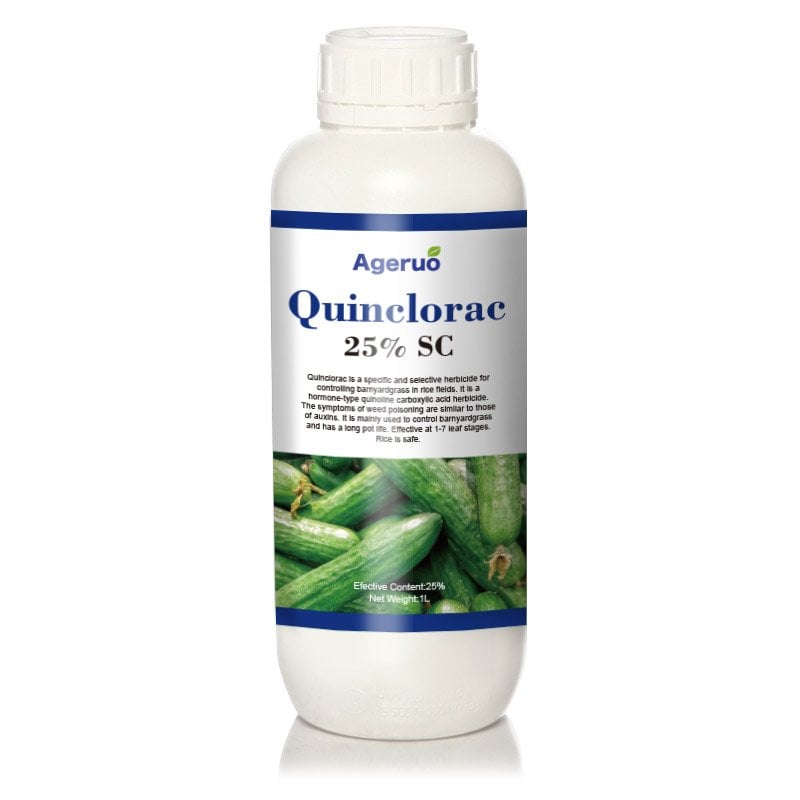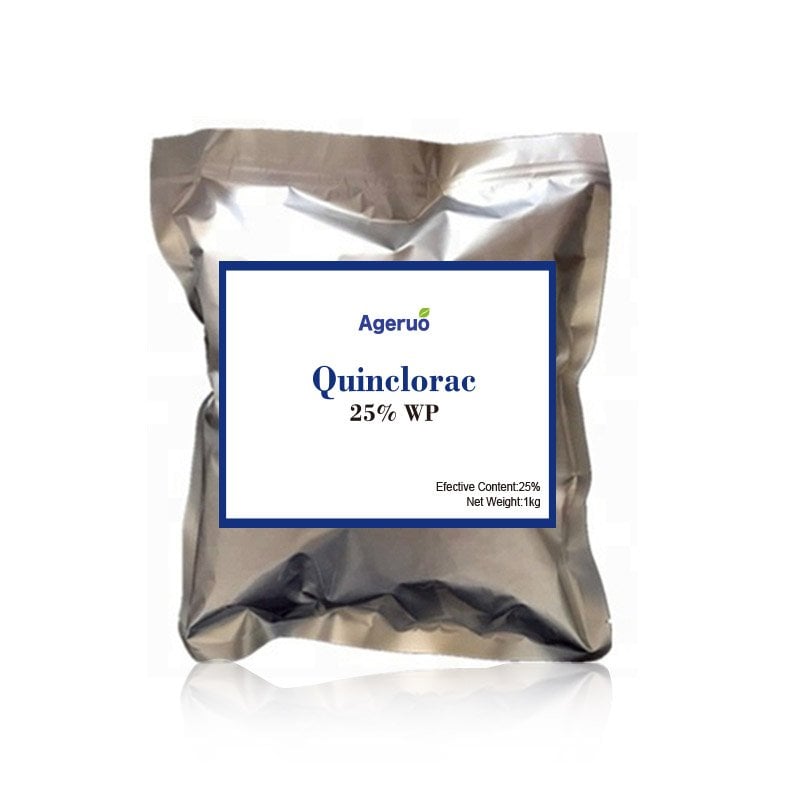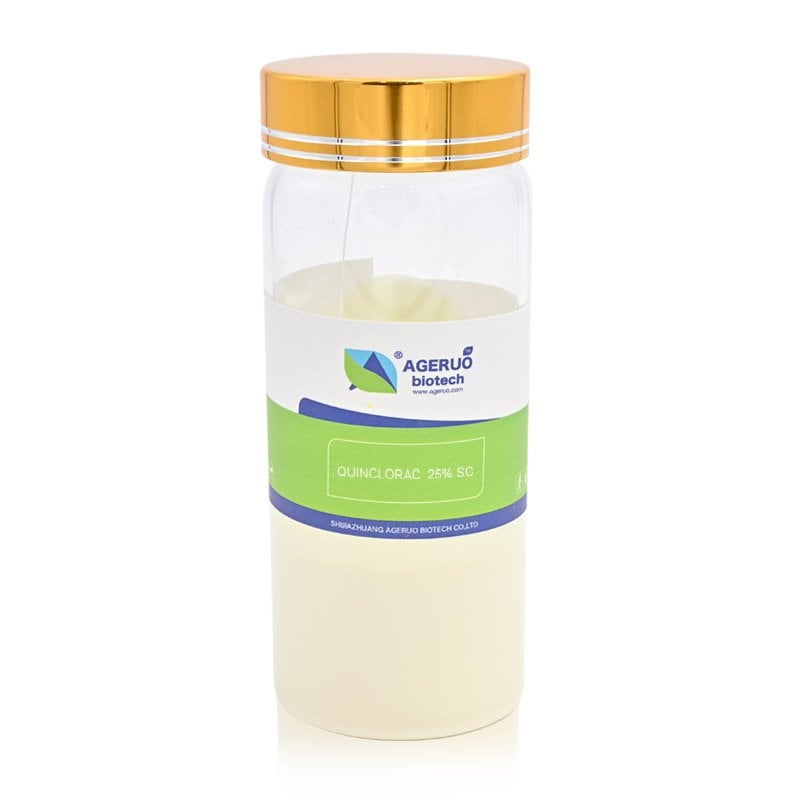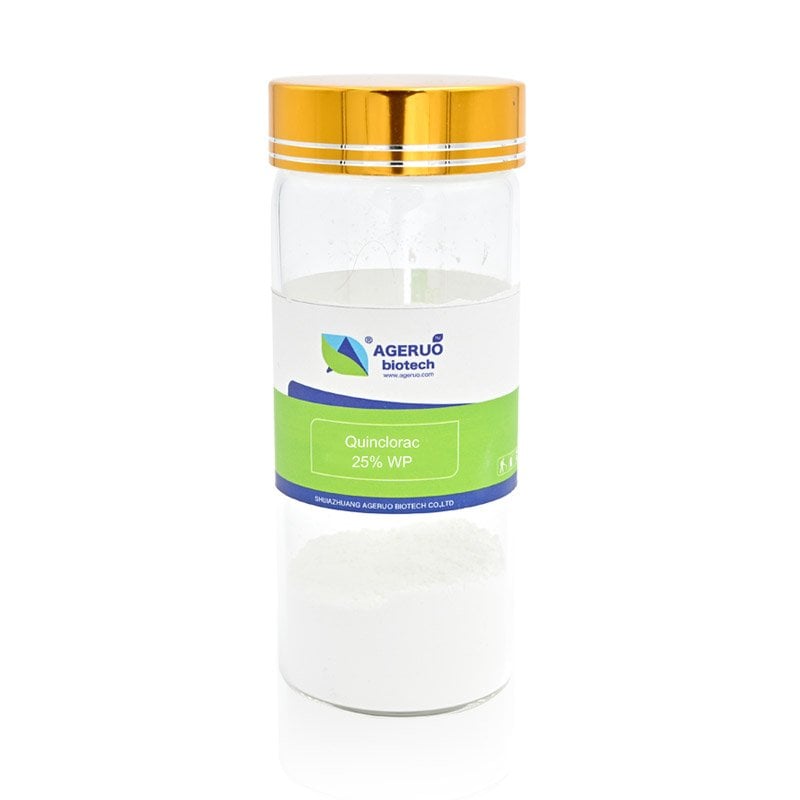Comprehensive Guide on Quinclorac Herbicide
Quinclorac Multi-Purpose Herbicide is perfect for controlling mattongrass, clover and other stubborn weeds in lawn and agricultural settings.
What is Quinclorac?
Quinclorac is a selective herbicide primarily used in turf management and agriculture to control a range of tough broadleaf and grassy weeds. Known for its effectiveness against crabgrass and other persistent weeds, quinclorac is a popular choice for homeowners, landscapers, and agricultural professionals alike.
What is Quinclorac Herbicide?
Quinclorac works as a systemic herbicide, meaning it is absorbed and transported throughout the plant, causing its eventual demise. This makes it particularly effective on stubborn weeds that are difficult to kill with contact-only herbicides.
How Does Quinclorac Work?
Quinclorac targets specific enzymes in weeds that are essential for cell division and growth. By disrupting these enzymes, quinclorac prevents the plant from growing, ultimately causing it to die off. Its unique mode of action makes it effective on many weeds that other herbicides struggle to control.
What is Quinclorac Used For?
Quinclorac is widely used to control a variety of weeds in turf areas such as golf courses, residential lawns, and sports fields. It is also utilized in agriculture for managing weeds in fields of crops like rice. Quinclorac effectively controls weeds such as crabgrass, foxtail, barnyardgrass, and clover.
Quinclorac Kills What Weeds?
Quinclorac is especially effective on:
- Crabgrass
- Clover
- Barnyardgrass
- Foxtail
- Dandelion
Its versatility allows it to target both grassy and broadleaf weeds, making it highly adaptable for turf and field applications.
Application and Mixing
How to Apply Quinclorac
For best results, apply quinclorac when weeds are actively growing, typically in warmer weather. Ensure that the product is applied evenly across the lawn or field, covering all target weeds thoroughly.
How to Mix Quinclorac
Quinclorac is commonly mixed with water before application. Use the recommended ratio provided on the product label, typically adding a surfactant to improve absorption by the weeds.
How Much Quinclorac per Gallon of Water?
The standard rate is approximately 1 tablespoon per gallon of water for spot treatments, but always refer to the product label for precise measurements based on the targeted weed and area.
How Much Quinclorac per Acre?
For broadcast applications, the typical rate is around 1 pound per acre. This rate may vary depending on the weed species and the specific formulation of quinclorac used.
How Long After Quinclorac Can I Seed?
After applying quinclorac, wait at least 21 days before seeding to allow the herbicide to break down in the soil. This prevents any negative impact on new seedlings.
Can You Mix Quinclorac and 2,4-D?
Yes, quinclorac can be mixed with 2,4-D for a broader spectrum of weed control. This combination is effective for targeting a wider range of both broadleaf and grassy weeds.
Effectiveness
How Long Does Quinclorac Take to Work?
Quinclorac begins to work within 7 to 10 days, but full weed control may take up to 21 days as it systematically kills the targeted weeds.
How Long Does It Take for Quinclorac to Kill Crabgrass?
Crabgrass control may start showing results within 10 to 14 days. Mature crabgrass may take longer or require additional treatments for complete control.
Will Quinclorac Kill Mature Crabgrass?
Yes, quinclorac can kill mature crabgrass, though it may require a higher application rate or multiple treatments due to the resilience of older plants.
Safety
Is Quinclorac Safe?
When used according to label instructions, quinclorac is generally safe. However, precautions such as wearing protective gear and following application guidelines are essential to avoid exposure risks.
Is Quinclorac Safe for Bermuda Grass?
Quinclorac is generally safe for Bermuda grass when applied at recommended rates. It selectively targets weeds without damaging most turf grasses, though it’s best to check for turf tolerance.
Is Quinclorac Safe for Dogs?
Once quinclorac has dried on the treated area, it is considered safe for pets. However, dogs and other animals should be kept off treated areas until the herbicide has fully dried, which usually takes a few hours.
Is Quinclorac Safe for Pets?
Yes, quinclorac is safe for pets when used properly. To minimize risks, ensure pets do not enter the treated area until it is fully dry.
Weeds and Grass Control
Does Quinclorac Kill Crabgrass?
Yes, quinclorac is highly effective at killing crabgrass, making it one of the primary choices for controlling this persistent weed.
Does Quinclorac Kill Clover?
Quinclorac is effective on clover, as well as other common broadleaf weeds in turf.
Does Quinclorac Kill Nutsedge?
Quinclorac has limited efficacy on nutsedge; for this weed, it’s best to use herbicides specifically designed to target sedges.
Does Quinclorac Kill Dallisgrass?
While quinclorac can affect some grassy weeds, it is generally less effective on Dallisgrass, which may require targeted treatments.
Does Quinclorac Kill Grass?
Quinclorac is selective and typically does not harm turf grass when applied at recommended rates, though it can affect certain species of grass if over-applied.
Will Quinclorac Kill Crabgrass?
Yes, quinclorac is designed to effectively kill crabgrass, even mature plants.
Will Quinclorac Kill Bermuda Grass?
Quinclorac is safe for Bermuda grass when used at recommended rates, as it selectively targets weeds.
Will Quinclorac Kill Wild Violets?
Quinclorac may provide partial control of wild violets, but for complete removal, combining it with other herbicides may be necessary.
Conclusion
Quinclorac is a versatile and effective herbicide, ideal for controlling crabgrass, clover, and other tough weeds in turf and agricultural settings. With proper application and adherence to safety guidelines, quinclorac offers a reliable solution for weed management. Its selective action and compatibility with other herbicides make it an essential tool for agricultural professionals, homeowners, and landscapers alike.
Quinclorac Multi-Purpose Herbicide is perfect for controlling mattongrass, clover and other stubborn weeds in lawn and agricultural settings.
What is Quinclorac?
Quinclorac is a selective herbicide primarily used in turf management and agriculture to control a range of tough broadleaf and grassy weeds. Known for its effectiveness against crabgrass and other persistent weeds, quinclorac is a popular choice for homeowners, landscapers, and agricultural professionals alike.
What is Quinclorac Herbicide?
Quinclorac works as a systemic herbicide, meaning it is absorbed and transported throughout the plant, causing its eventual demise. This makes it particularly effective on stubborn weeds that are difficult to kill with contact-only herbicides.
How Does Quinclorac Work?
Quinclorac targets specific enzymes in weeds that are essential for cell division and growth. By disrupting these enzymes, quinclorac prevents the plant from growing, ultimately causing it to die off. Its unique mode of action makes it effective on many weeds that other herbicides struggle to control.
What is Quinclorac Used For?
Quinclorac is widely used to control a variety of weeds in turf areas such as golf courses, residential lawns, and sports fields. It is also utilized in agriculture for managing weeds in fields of crops like rice. Quinclorac effectively controls weeds such as crabgrass, foxtail, barnyardgrass, and clover.
Quinclorac Kills What Weeds?
Quinclorac is especially effective on:
- Crabgrass
- Clover
- Barnyardgrass
- Foxtail
- Dandelion
Its versatility allows it to target both grassy and broadleaf weeds, making it highly adaptable for turf and field applications.
Application and Mixing
How to Apply Quinclorac
For best results, apply quinclorac when weeds are actively growing, typically in warmer weather. Ensure that the product is applied evenly across the lawn or field, covering all target weeds thoroughly.
How to Mix Quinclorac
Quinclorac is commonly mixed with water before application. Use the recommended ratio provided on the product label, typically adding a surfactant to improve absorption by the weeds.
How Much Quinclorac per Gallon of Water?
The standard rate is approximately 1 tablespoon per gallon of water for spot treatments, but always refer to the product label for precise measurements based on the targeted weed and area.
How Much Quinclorac per Acre?
For broadcast applications, the typical rate is around 1 pound per acre. This rate may vary depending on the weed species and the specific formulation of quinclorac used.
How Long After Quinclorac Can I Seed?
After applying quinclorac, wait at least 21 days before seeding to allow the herbicide to break down in the soil. This prevents any negative impact on new seedlings.
Can You Mix Quinclorac and 2,4-D?
Yes, quinclorac can be mixed with 2,4-D for a broader spectrum of weed control. This combination is effective for targeting a wider range of both broadleaf and grassy weeds.
Effectiveness
How Long Does Quinclorac Take to Work?
Quinclorac begins to work within 7 to 10 days, but full weed control may take up to 21 days as it systematically kills the targeted weeds.
How Long Does It Take for Quinclorac to Kill Crabgrass?
Crabgrass control may start showing results within 10 to 14 days. Mature crabgrass may take longer or require additional treatments for complete control.
Will Quinclorac Kill Mature Crabgrass?
Yes, quinclorac can kill mature crabgrass, though it may require a higher application rate or multiple treatments due to the resilience of older plants.
Safety
Is Quinclorac Safe?
When used according to label instructions, quinclorac is generally safe. However, precautions such as wearing protective gear and following application guidelines are essential to avoid exposure risks.
Is Quinclorac Safe for Bermuda Grass?
Quinclorac is generally safe for Bermuda grass when applied at recommended rates. It selectively targets weeds without damaging most turf grasses, though it’s best to check for turf tolerance.
Is Quinclorac Safe for Dogs?
Once quinclorac has dried on the treated area, it is considered safe for pets. However, dogs and other animals should be kept off treated areas until the herbicide has fully dried, which usually takes a few hours.
Is Quinclorac Safe for Pets?
Yes, quinclorac is safe for pets when used properly. To minimize risks, ensure pets do not enter the treated area until it is fully dry.
Weeds and Grass Control
Does Quinclorac Kill Crabgrass?
Yes, quinclorac is highly effective at killing crabgrass, making it one of the primary choices for controlling this persistent weed.
Does Quinclorac Kill Clover?
Quinclorac is effective on clover, as well as other common broadleaf weeds in turf.
Does Quinclorac Kill Nutsedge?
Quinclorac has limited efficacy on nutsedge; for this weed, it’s best to use herbicides specifically designed to target sedges.
Does Quinclorac Kill Dallisgrass?
While quinclorac can affect some grassy weeds, it is generally less effective on Dallisgrass, which may require targeted treatments.
Does Quinclorac Kill Grass?
Quinclorac is selective and typically does not harm turf grass when applied at recommended rates, though it can affect certain species of grass if over-applied.
Will Quinclorac Kill Crabgrass?
Yes, quinclorac is designed to effectively kill crabgrass, even mature plants.
Will Quinclorac Kill Bermuda Grass?
Quinclorac is safe for Bermuda grass when used at recommended rates, as it selectively targets weeds.
Will Quinclorac Kill Wild Violets?
Quinclorac may provide partial control of wild violets, but for complete removal, combining it with other herbicides may be necessary.
Conclusion
Quinclorac is a versatile and effective herbicide, ideal for controlling crabgrass, clover, and other tough weeds in turf and agricultural settings. With proper application and adherence to safety guidelines, quinclorac offers a reliable solution for weed management. Its selective action and compatibility with other herbicides make it an essential tool for agricultural professionals, homeowners, and landscapers alike.






